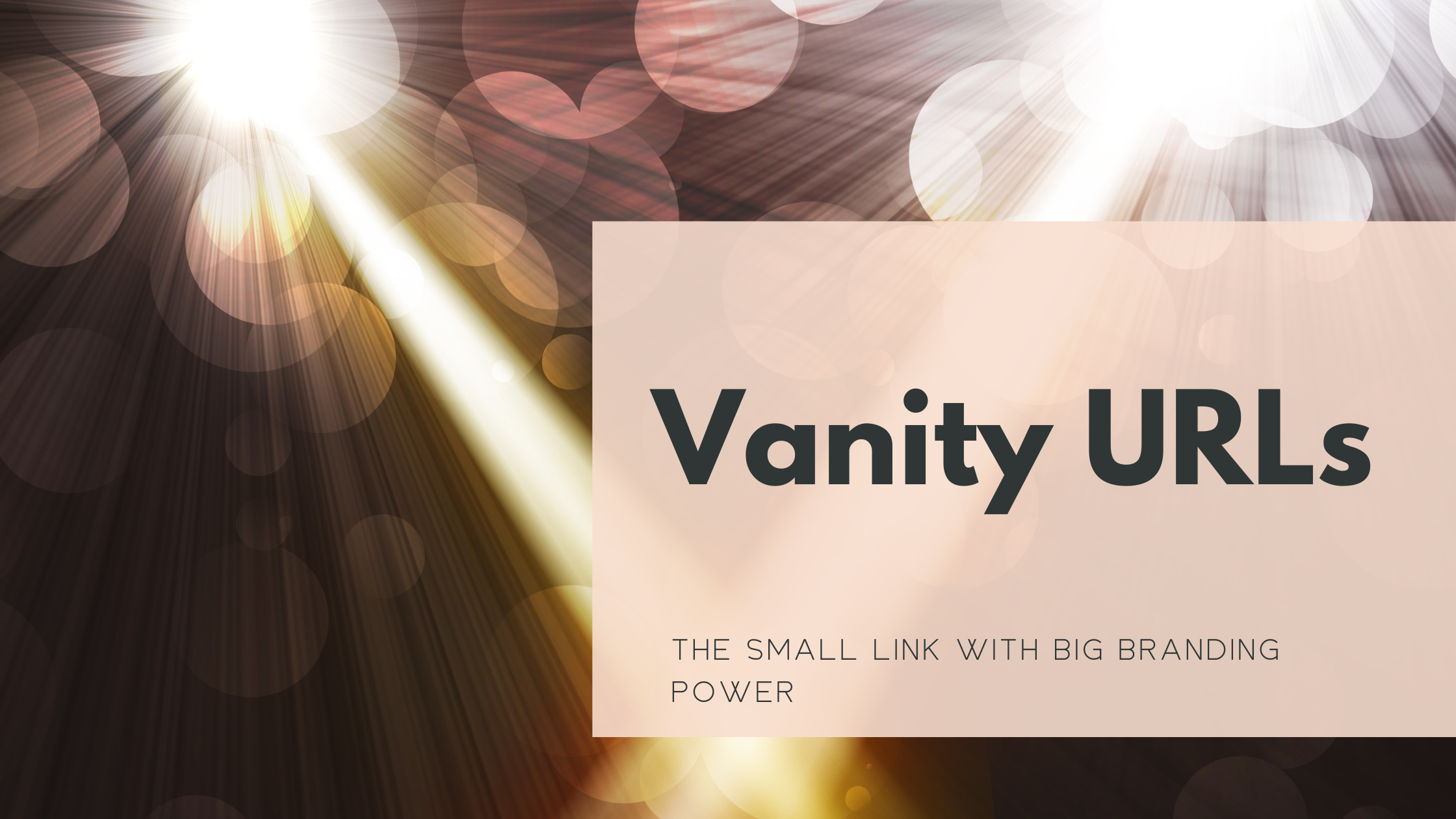Vanity URLs: The Small Link with Big Branding Power
Everything you need to know about what they are, how to use them, and why they matter more than you think.
IIn the ever-evolving world of digital branding, where attention spans are short and credibility is everything, how you present your links matters more than ever. That’s where Vanity URLs come in—not just as a tech hack, but as a strategic brand tool.
Let’s unpack what they are, how they work, and how to make them part of your client-winning toolkit.
1. So what Is a Vanity URL?
A Vanity URL is a customized, branded link that redirects to a longer, often more complex destination. It’s short, easy to read, memorable, and built with intention.
For example:
Key features of a Vanity URL:
Uses a custom domain (ideally your own)
Has a clean, readable path (e.g., /freeguide, not /page?id=8383)
Makes your brand look buttoned-up, modern, and trustworthy
Vanity URLs aren't just about aesthetics—they improve user experience, increase click-through rates, and simplify communication across digital and offline touchpoints.
2. Why Not Use Vanity URLs as the Original URL?
It’s tempting to just make all your URLs pretty from the start—but that misses the point.
Here’s why you should keep your original URLs detailed and use vanity URLs as redirect wrappers instead:
❗️SEO Considerations
Your original URL likely includes category tags, keywords, and UTM parameters that help with:
Search engine indexing
Analytics segmentation
Internal linking structure
Vanity URLs strip that away for clarity—but behind the scenes, you still want that SEO juice.
✅ Flexibility + Future-Proofing
Need to update a landing page’s structure or change your website’s CMS? You can keep the vanity URL stable while updating the destination.
Think of the vanity link as a branded portal—not the final address.
3. Reusing Vanity URLs: Smart or Risky?
Short answer: Don’t reuse unless the campaign is repeatable and consistent.
When It’s Okay:
A recurring promo like vmbcreative.com/springoffer
A branded shortlink used in podcast episodes that always points to your services page
When It’s Not:
If the link originally pointed to a freebie download and now leads to a paid consultation—👎 brand trust takes a hit
Pro Tip: If you must reuse, give your audience a heads-up, or make sure the new destination logically matches the link’s original promise.
4. What Is Not a Vanity URL?
Not every short or custom-looking link counts as a proper vanity URL.
Here’s what doesn’t make the cut:
Random shortened links: bit.ly/2Xk3pzy (no branding, unreadable)
Default page slugs: /page-3-final-rev2-edited
Overstuffed paths: /lead-gen-funnel-step1-early-access-2023form
If your audience can’t say it out loud or guess the content, it’s not a vanity URL—it’s a missed opportunity.
5. Best Practices for Vanity URLs
To maximize their effectiveness, use the following guidelines:
✅ Make it predictable and intuitive
If the page offers a brand guide, use /brandguide or /getbrandguide, not /offer4.
✅ Keep it under 3 words
Shorter = more memorable. Aim for 12 characters or less if you’re using a printed format or speaking it aloud (e.g., podcast, video, stage talk).
✅ Use your own domain
vmbcreative.com/brandingdeck builds far more trust than bit.ly/3nx8vwr.
✅ Avoid symbols, underscores, and digits
Stick to words. Use hyphens if needed for readability: /brand-audit
✅ Use tracking smartly
Layer UTMs on the destination URL, not the vanity one. That way your tracking stays invisible but effective.
6. Common Uses & Examples of Vanity URLs
Here’s where Vanity URLs shine in real marketing use:
7. How to Set Up a Vanity URL (Step-by-Step)
You don’t need a developer or tech wizard.
Just follow these steps:
🛠 Step 1: Choose your domain
Use your primary brand domain or buy a short branded one (like vmb.link or getvmb.com).
🛠 Step 2: Select a tool
Options include:
Bitly (Pro) – Custom domains + great analytics
Rebrandly – Brand-first interface
Pretty Links (WordPress) – Ideal for WP users
TinyURL Pro – Simple and fast
🛠 Step 3: Map the redirect
Enter the destination URL (long/original)
Assign a custom slug (e.g., /2025guide)
Preview and test it.
🛠 Step 4: Track with UTMs
Use tools like Google’s UTM builder to add:
Source (e.g., Instagram)
Campaign (e.g., Q2-freebies)
Medium (e.g., organic)
Attach those UTMs only to the final URL, not the vanity one.
🛠 Step 5: Monitor performance
Use Bitly or Google Analytics to monitor click-throughs, traffic sources, and campaign ROI.
8. Conclusion: Why Vanity URLs Are a Brand Power Move
In a world where every link can either confuse or convert, vanity URLs give you control.
They show your audience you’re intentional. They elevate your brand presence in small but powerful ways. And most importantly—they make it easier for people to say “yes.”
At VMB Creative, we treat branding like an ecosystem—and yes, even your links are part of that story.
📌 TL;DR Recap
✅ A Vanity URL is a branded, short redirect link—clean, clear, and on-brand
✅ Don’t use them as your original page URL—redirect instead
✅ Avoid reusing unless it’s for a recurring campaign
✅ Best practices: Short, brand-aligned, CTA-based
✅ Great for IG bios, podcast shoutouts, email CTAs, and print
✅ Tools: Bitly, Rebrandly, Pretty Links
✅ Layer UTMs on destination pages to track performance
🧠 Need help creating campaign-ready links that convert?
We build not just beautiful brands—but strategic ones. Let’s set up your vanity links with the same polish and precision we bring to your brand identity.
We’re open for consultations






